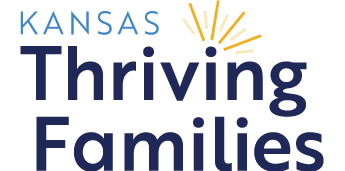
National Movement to Reinvent Child Welfare
Every child deserves a nurturing family.
Every family deserves to live in a safe, supportive community.
Together, we can build momentum to prioritize family well-being in hopes of reducing our over-reliance on foster care and family separation. We can offer better support and resources for children and the adults in their lives – parents, family members, caregivers, and educators – before they come in contact with agencies like child protective services.
Separation must be a last resort.

Let’s fundamentally rethink the child welfare system in Kansas
Every child is filled with tremendous promise – and we have a shared obligation to foster their potential.
Our current system continues to fall short in ensuring all Kansas families experience safe, stable environments for children to thrive.
Over the past decade, there was a 47% rise in the children in foster care in Kansas, with rates of removal among the highest in the nation. More youth during that time were emancipated from foster care compared to national rates.
Kansas must actively maximize every opportunity for a child’s experiences to be positive, nurturing, and safe. We must commit to partner with parents and strengthen families in their homes.
We must invest in communities and systems of care that prioritize keeping Kansas families together.
Kansas has joined states across the nation in the Thriving Families, Safer Children movement to rethink child welfare systems. The goal is to come together and re-imagine the multitude of specific ways we can better support children, families, and communities.
Priorities for Kansas
A Focus on Well-being
Address systemic barriers to well-being that reduce the need for child protective services. Families should not be penalized for lacking basic needs and supports.
Targeted, Local Approaches
Develop networks of community support for prevention of maltreatment. Our local systems of care must respond to families experiencing a life disruption before it becomes a crisis.
Listening and Co-Designing
Integrate parent and youth voice into the design of well-being systems. When families feel connected to others and supported by their community, they build resilience for shaping their future.
Taking Action
Review definitions of neglect and mandatory reporting to ensure that maltreatment is clearly differentiated from issues of poverty.
Coordinating Efforts
Coordinate and data share with public health initiatives to strengthen and support Kansas children and families in multifaceted ways.
In a system of child well-being…
More children will stay with their families. We’ll address and alleviate family stressors before they become crises that result in intervention from the child welfare system.
We recognize the difference between poverty and child maltreatment. We’ll address the concrete needs of more children and families, preventing potential maltreatment before it occurs.
Resources will be available for families experiencing disruption. Communities will reallocate resources into concrete supports like help with legal representation, obtaining housing, accessing public benefits, and getting the right educational services for their needs.
Costs will go down. Preventative services and concrete supports are less costly than our current system.
Resources
for Promoting Awareness
Conversation Starters and The Words We Choose to Use video developed by the Capacity Building Center for States, Children’s Bureau, Administration for Children and Families, U.S. Department of Health and Human Services (2021) as part of its Visioning for prevention series.
Kansas Partners
- Individuals with lived experience of the child welfare, foster care, or prevention services system
- Kansas Children’s Cabinet and Trust Fund
- Kansas Department for Children and Families
- Kansas Children’s Service League
- Kansas State Department of Education
- Kansas Department for Health and Environment
- University of Kansas School of Social Welfare
- KU Center for Public Partnerships & Research
Updates coming soon.
Click to download the Kansas Thriving Families virtual background and save it to your computer.
- Open your “Zoom Desktop Client” and navigate to your “Settings” screen.
- Click on the “Virtual Background” tab and then click the “+ button” to select the “Add Image” option.
- Choose the background you downloaded from the web.
Note: Zoom defaults to mirroring your own image in its preview but not to the other people you’re on a call with. The text in the image will display correctly for others in your Zoom call.
Spread Awareness and Build Support
Re-designing child welfare systems into child well-being systems begins with conversations. Use the prompts and activities in the Conversation Starters guide to engage staff and partners in dialogue about what that system might look like. Examine together the language, patterns of thought, and messaging that keep the current system in place. You can use the conversation starters with middle management, frontline staff, community partners, the public, and legislators to begin to co-create the vision for a system that focuses on strengthening families to prevent child abuse and neglect.
Contact Us
To learn more about the Kansas Thriving Families work contact Meghan Cizek at the University of Kansas Center for Public Partnerships and Research.


